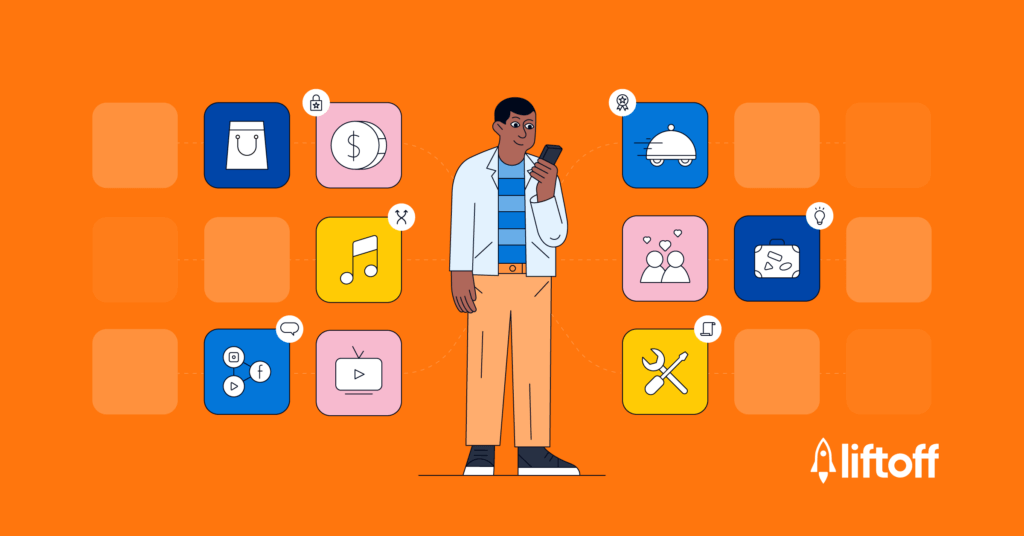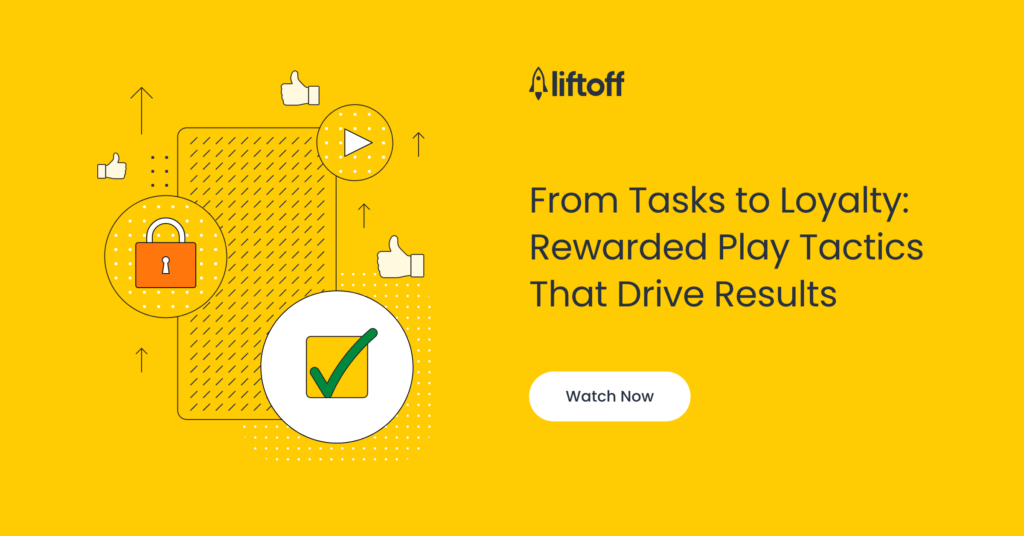
Webinar Recap | From Tasks to Loyalty: Rewarded Play Tactics That Drive Results
Rewarded play apps have risen significantly in popularity over the past 12 months, and we’d argue it’s been a long time coming. After all, it’s hard to resist the appeal of freebies, especially when playing some of the market’s biggest and best mobile games.
But there’s more to rewarded play apps than prizes: the most successful apps deploy innovative strategies and features to boost user participation and drive retention. For example, features like leaderboards and social media-esque feeds can foster a sense of community. They also work well with subscription monetization models that increase revenue and enhance the overall user experience.
In our recent Webinar, From Tasks to Loyalty: Rewarded Play Tactics That Drive Results, Mona Hietala and Christie Crable examined how rewarded play features and monetization models offer a treasure trove of high-impact revenue strategies. Below are some highlights from their discussion.
How Rewarded Play Apps Create Enticing In-App Experiences
If you’re unfamiliar with rewarded play apps like Mistplay, JustPlay, and Swagbucks, you might wonder exactly what they are and how they work. In a nutshell, rewarded play apps provide ways to earn real-world rewards for doing specific actions in and/or outside the app.
Rewarded Play apps typically offer two different ways for users to earn prizes. We’ll start with the simpler way: one-time app rewards. For these, the user completes a one-time-only task, such as purchasing something or completing a survey, in exchange for a reward.
The second, more complex way involves completing task campaigns. Users have to download a separate game or app onto their phone, opt into activity tracking (so the app knows you’ve completed the tasks!), and work through a series of missions to earn rewards.
All tasks typically fall into one of three categories: onboarding, progression, or purchase tasks. Having three categories allows apps to tailor their efforts to target specific groups and align the task with the app’s design.
- If you’re unfamiliar with rewarded play apps like Mistplay, JustPlay, and Swagbucks, you might wonder exactly what they are and how they work. In a nutshell, rewarded play apps provide ways to earn real-world rewards for doing specific actions in and/or outside the app.
- Rewarded Play apps typically offer two different ways for users to earn prizes. We’ll start with the simpler way: one-time app rewards. For these, the user completes a one-time-only task, such as purchasing something or completing a survey, in exchange for a reward.
- The second, more complex way involves completing task campaigns. Users have to download a separate game or app onto their phone, opt into activity tracking (so the app knows you’ve completed the tasks!), and work through a series of missions to earn rewards.
- All tasks typically fall into one of three categories: onboarding, progression, or purchase tasks. Having three categories allows apps to tailor their efforts to target specific groups and align the task with the app’s design.
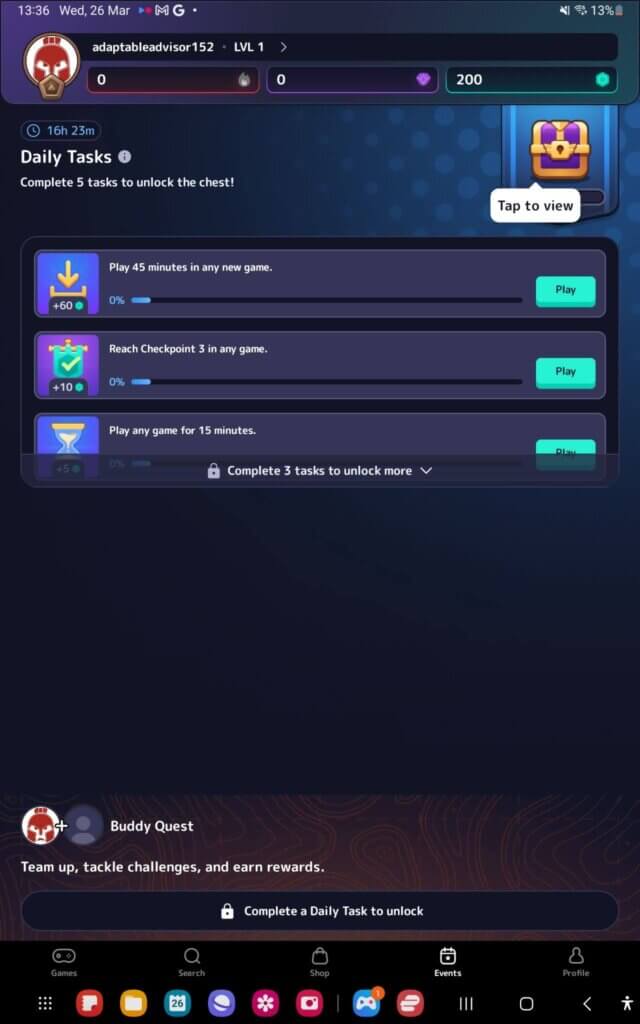
Daily Tasks in Mistplay
Users’ tasks will often be a mixture of the above three categories. Generally, users work their way through tasks in a specific order without an option to bypass tasks that require purchasing. Each task has a value expressed as in-app currency. If they accumulate enough, users can convert the in-app currency into something of real-world value, usually gift cards. Some apps also offer real-life items like game consoles or the option to donate earnings to charity.
“Tasks are convenient in guiding user behavior,” says Mona Hietala, a Senior Analyst at AppRefinery. “They help users build habits and extend their time engaging with campaigns on the platform. The big thing is that engagement correlates with retention, so when users find the experience fun and meaningful, they are more likely to keep returning.”
Strategies for Boosting Engagement and Social Play in Rewarded Play Apps
To help users understand the User Motivational Framework, AppRefinery also applies these motivational drivers to several archetypes, which represent the main personality groups in the mobile market.
One of these archetypes is the Competitor. Users who fall under this Archetype are driven by their desire to win, improve, and show off their skills—whether that’s against other users, the odds, or even their own past performance. It’s arguably the biggest user archetype in iGaming, as most players tend to engage with iGaming apps for the thrill of winning.
However, users who fall under the Competitor archetype also score highly in other areas of the User Motivational Framework, especially social status and competition, achieving milestones, and efficiency improvement. In other words, these users respond well to features that recognize their accomplishments or allow them to tell others about them—such as leaderboards, achievements, and the ability to share wins in social feeds.
Rewarded play apps have impressive engagement features that frame and guide the user experience. One of the most popular engagement features involves streaks, which reward users for checking in or completing tasks on a daily basis.
“What makes streaks so powerful is that they become more valuable the more time and effort the user has spent building and maintaining them,” says Hietala. “Breaking the streak means losing those benefits, and breaking your pattern becomes harder and harder as time goes on. Streaks also pair well with other systems—like daily tasks, sweepstakes, and even minigames—which is an added bonus.”

Kashkick’s Streak System
Certain rewarded play apps also use minigames to boost engagement. One example is Inbox Dollars, which features Scratch & Win mechanisms. User see progress on their Scratch & Win meter whenever they engage with a promotion or campaign. After reaching the first milestone on the bar, the user can choose an interactive scratch card minigame with a chance to win prizes.
Users can also choose to hold onto their progress and keep engaging with the app. At this point, they’ll continue to build up their meter and eventually gain access to more valuable scratch cards with better potential rewards.

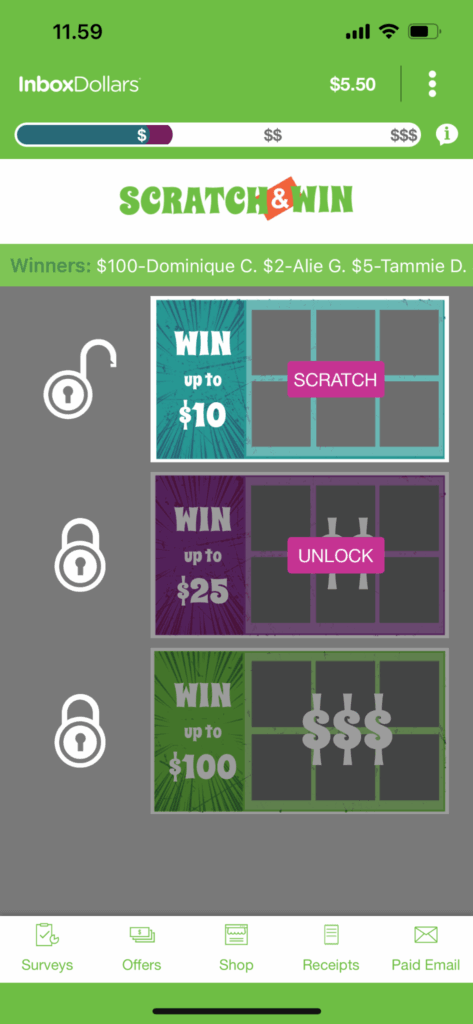
Scratch & Win Stamps in InboxDollars
A focus on social features
Social features are still catching on as a way to build community. They’re proven to be powerful tools in driving engagement in gaming apps. Users become more invested in their progress by interacting with their peers as they feel socially accountable. As a bonus, these features can also open new doors for monetization tactics like cosmetics (so you look unique among your friends) or paid boosters.
A top social feature is leaderboards, which help activate users who enjoy a little competition. To keep things simple, users usually earn their place on these leaderboards by engaging as they normally would. So what’s the benefit? Users can see how their friends are doing, and may feel encouraged to surpass them. Secondly, there is often a reward for the top-ranking users, so it’s worthwhile to aim for the top.
Hietala adds that feeds are another social feature most people familiar with Facebook and Twitter/X will recognize: “These are a good way of showing a busy, active community. Plus, as they are in a familiar format, they are easy for users to adapt to and interact with.”
Valuable tactics to monetize rewarded platforms beyond UA
Finally, it’s important to note that some rewarded play apps have started diversifying their revenue streams with other monetization platforms. The most common way of doing this currently is through in-app advertising, although there are also some instances of microtransactions and loyalty/subscription programs. Interestingly, many of these monetization features are popular in gaming apps, where there appears to be some level of crossover.
Subscription plans are one example. They are prevalent in gaming apps. Paying users get access to better rewards and services to help them make the most of their playtime. In Richie games, for example, those who opt for a paid subscription get access to instant PayPal withdrawals, priority notifications, and higher-earning activities. It’s a good exchange, although one that primarily appeals to the most dedicated users.
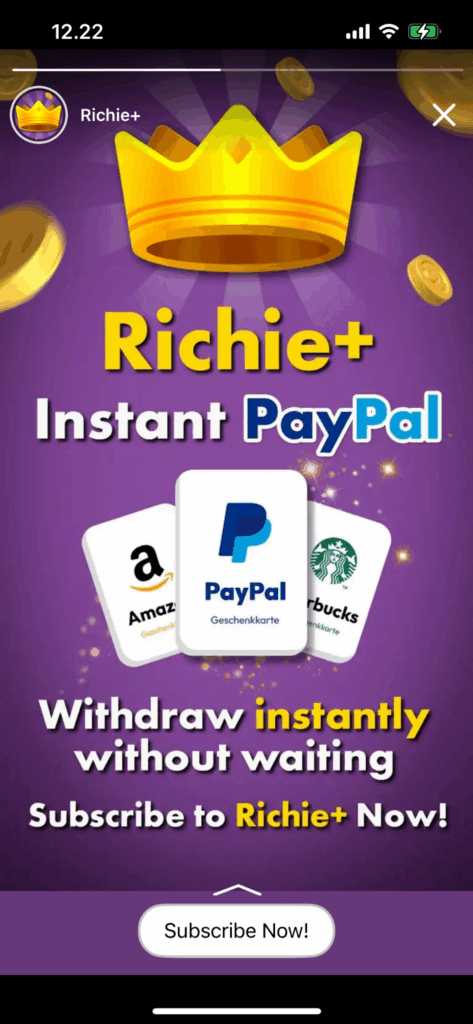
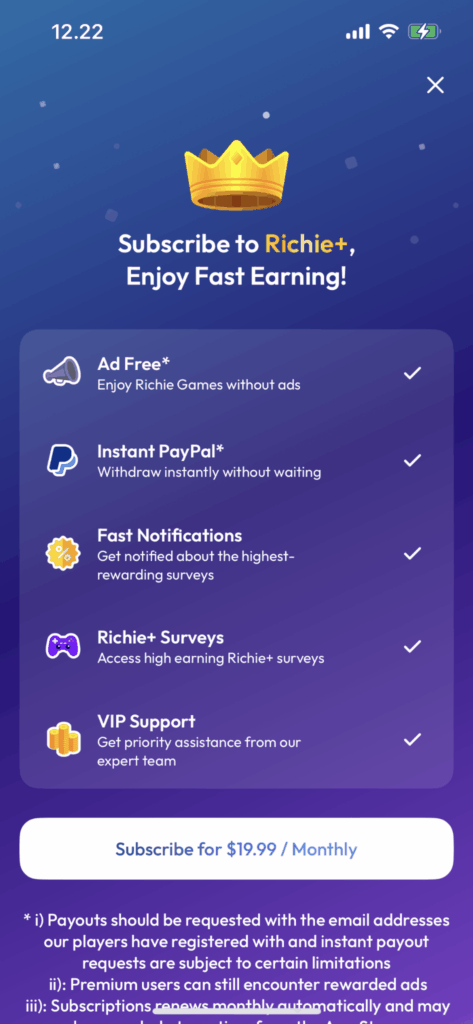
Subscription Plan in Richie Games
The same can be said for cosmetics, a colossal monetization feature in the gaming industry. Players can personalize their in-game characters. Mistplay, for instance, allows users to purchase avatars to customize their profile using rewards earned through engaging with the app, rather than cashing out for gift cards. Arguably, cosmetics may be more relevant in mobile games, but depending on the app, there may be a market for it among users who enjoy the way they enhance social interactions in the app.
For more information on how to engage users in iGaming apps, make sure you watch the full webinar here or by clicking on the button below.
Want to learn more about GameRefinery? Visit the website.
